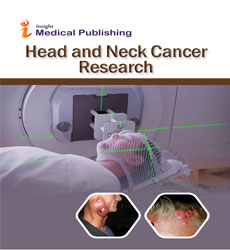Abstract
Phono-microsurgery for Recalcitrant Vocal Fold Lesions
Background: The human vocal folds undergo tremendous soft tissue trauma. As such, they are susceptible to phonotraumatic lesions including nodules, cysts, and polyps. These lesions arise from an acute event and can persist with varying degrees of hoarseness and impact on the individual’s occupation, productivity, and social interactions. Achieving precise phonomicrosurgical resection with carefully directed speech therapy provides patients with the highest chance of successful long-term vocal rehabilitation.
Methods: Consecutive patients presenting from 2008 to 2016 with phonotraumatic lesions were included. All patients had pre-surgery high-definition video stroboscopy and completed the voice handicap index (VHI), singing voice handicap index (SVHI) when appropriate and voice-related quality of life (VR-QOL). The minimum patient follow-up was six months. Outcome measures were recurrence, the requirement for revision surgery, improvement in the VHI, SVHI, VR-QOL, and post-surgery video stroboscopy.
Results: 280 patients were included (169 female). Complete data were available on 182 patients with the majority comprising teachers and singers. The VHI was substantially elevated during presurgery and significantly lowered by subepithelial resection. Videostroboscopy showed substantial improvement in surface pliability and glottal closure following surgery. There were two recurrences and one patient subsequently developed a unilateral vocal fold polyp 18 months after initial surgery for nodules.
Conclusion: Phonomicrosurgery with speech therapy can enable optimal vocal rehabilitation in patients with phonotraumatic lesions. Surgery can definitively restore vocal fold pliability and glottal closure translating to significantly improved if not normal phonation with long-term success and negligible recurrence.
Author(s): Matthew S Broadhurst
Abstract | Full-Text | PDF
Share this

Google scholar citation report
Citations : 28
Head and Neck Cancer Research received 28 citations as per google scholar report
Abstracted/Indexed in
- Google Scholar
- JournalTOCs
- China National Knowledge Infrastructure (CNKI)
- WorldCat
- Publons
- Secret Search Engine Labs
Open Access Journals
- Aquaculture & Veterinary Science
- Chemistry & Chemical Sciences
- Clinical Sciences
- Engineering
- General Science
- Genetics & Molecular Biology
- Health Care & Nursing
- Immunology & Microbiology
- Materials Science
- Mathematics & Physics
- Medical Sciences
- Neurology & Psychiatry
- Oncology & Cancer Science
- Pharmaceutical Sciences


